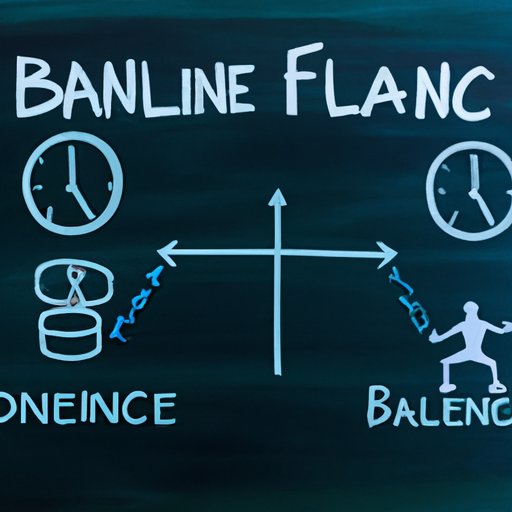Introduction
When it comes to exercise, one of the most common questions people have is how long they should workout each day. With busy schedules and other priorities, it can be challenging to find the ideal workout time. However, finding the sweet spot in your fitness routine is crucial to achieving your goals while maintaining good health. This article will explore the factors that determine how long you should exercise each day.
The Benefits of Shorter Workouts: Why 30 Minutes a Day is Plenty
One of the most significant advantages of shorter workouts is that they are more manageable and easy to fit into your daily schedule. Studies suggest that shorter, high-intensity workouts can be just as effective in improving fitness as longer workouts. You can make the most of a 30-minute workout by using high-intensity interval training (HIIT) and combining it with functional movements like pushups, squats, and lunges to target several muscle groups simultaneously.

Balancing Your Fitness Routine: How to Determine Your Ideal Workout Time
There is no one-size-fits-all answer when it comes to determining an ideal workout time. A good rule of thumb is to look at your fitness goals, current fitness level, and age when designing your routine. Depending on your goals, you may need more or less time to achieve your desired results. For example, if your goal is to lose weight, you may need to spend more time working out than someone who is trying to maintain their current fitness level.
The Risks of Overtraining: Why Less is More
Overtraining is a common risk associated with exercising too much without proper rest and recovery. Symptoms of overtraining include sleep disturbances, mood changes, and decreased performance. To avoid overtraining, it is essential to listen to your body and make sure you are giving it enough rest and recovery time. Taking days off, getting enough sleep, and staying hydrated are essential to preventing overtraining and maintaining good health.
Maximize Your Time: The Best Exercises for Effective Workouts
When time is limited, it is crucial to choose exercises that will provide maximum results in a shorter period. Compound exercises that target several muscle groups at once, such as squats, deadlifts, and burpees, are excellent choices for shorter workouts. However, proper form is vital to avoid injury and maximize results.
Breaking a Sweat: Why Intensity Matters More than Duration
Intensity is an important factor when it comes to achieving fitness results. Research shows that high-intensity workouts can lead to better results than longer, lower-intensity workouts. To increase intensity, you can decrease rest periods, increase weight, and perform workouts faster. Over time, gradually increasing intensity can help you reach your fitness goals faster.
The Importance of Rest and Recovery: When to Take a Break from Exercise
Rest and recovery are essential components of any fitness routine. Not giving your body enough time to rest and recover can lead to injury, decreased performance, and burnout. When considering how long to work out each day, it is essential to factor in rest and recovery time as well. When you feel overly fatigued or experience pain, it is crucial to take a break from exercise to allow your body to heal adequately.
Customizing Your Fitness Plan: A Guide to Finding Your Sweet Spot for Daily Exercise
Finding the ideal workout time and routine may take time and experimentation. It is essential to understand that there is no one-size-fits-all solution when it comes to fitness. Start by determining your fitness goals, current fitness level, and age, and tailor your routine to match. Make sure to incorporate rest and recovery into your routine and experiment with different exercises and intensities to find your sweet spot.
Conclusion
In conclusion, the ideal workout time will vary depending on factors such as age, fitness level, and fitness goals. Finding the sweet spot in your daily exercise routine is crucial to achieving optimal fitness while maintaining good health. By following the tips and information provided in this article, you can create a customized fitness plan that meets your individual needs and goals.
